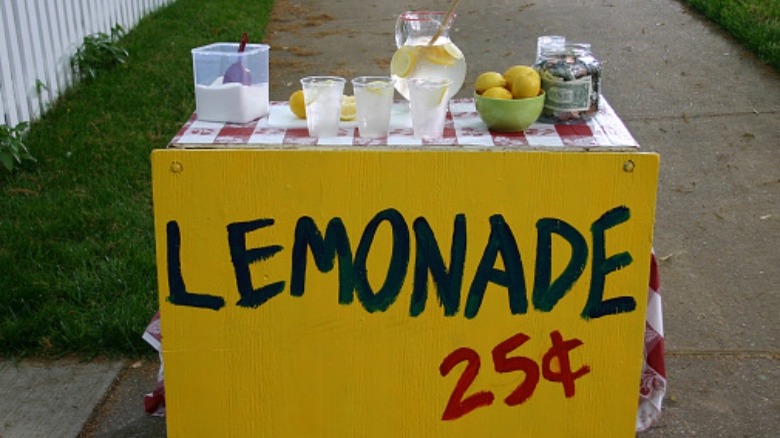The First Lemonade Stand Dates Back Over A Century To New York City
One of the very first mentions of the American lemonade stand comes from 1839 in New York City. That fall, the city's Daily Herald newspaper reported on a Ladies Fair at the local Apollo saloon that included a small market, musicians, and snacks. Among them was a lemonade stand, selling sips of a drink that, even by then, was an old-time American and European favorite.
The drink wasn't always a simple mix of water, sugar, and lemon juice, however. In lemonade's long, surprising history, the first known American recipe for the drink, published in "The Virginia Housewife" in 1824, included egg whites and produced something more akin to a sorbet. Still, it was surely as refreshing as its liquid counterpart, which had long been considered an excellent drink for the ill and the parched alike.
After its New York City debut in the early 19th century, the lemonade stand took off. The drink was relatively cheap and easy to make, situating it as just the thing for both opportunistic vendors and thirsty city dwellers.
When children took over the lemonade stand
Today, many Americans cherish the nostalgic image of a sidewalk lemonade stand run by a smiling child (a charmingly misspelled sign may or may not appear, too). But the early history of lemonade was very much dominated by adults. However, by 1918, every U.S. state had a law on the books that required children to go to school (as opposed to laboring in factories or tending to their siblings and other relatives). Meanwhile, changing social and political thought meant that kids were less often expected to get to work and more likely to have free time on their hands.
For business-minded tykes, the affordable and accessible lemonade stand was an easy target. Some made money for themselves, while others went a step further and collected funds for charity. Yet, as time went on, other factors meant that the sidewalk lemonade stand began to fade. Thanks in part to the many lemonade mixes available at the grocery store, it became so easy to make the drink yourself that a cup handed to you by a grubby elementary schooler became less appealing. Cautious parents were also increasingly less likely to let their kids set up a stand where they might interact with strangers.
Despite the downturn, the lemonade stand has a storied history. So, the next time you quaff a glass of ice-cold lemonade on a hot day, take a moment to consider the enterprising adults and children who helped the lemonade stand become an American classic.

